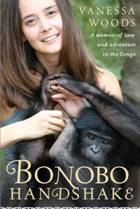When Marci’s mother-daughter book club girls were in fourth grade, their group read Rent a Third Grader by B. B. Hiller. In the book, students raise money to help an old police horse remain part of the community. That story inspired the girls to help their local animal shelter by organizing a bake sale.
In addition to raising $300, Marci believe the girls and moms both learned a lot from the experience. “The girls learned how to put into action the good feelings they got from the book,” says Marci. “They also had an opportunity to learn about each other in a different environment and see each other out in the world.” Besides spending time on a worthy cause with their daughters, Marci says the moms got to see “individual personalities and passions come out.”
If you haven’t yet volunteered with your book group—mother-daughter or otherwise—this summer may be the perfect time for you to consider taking on a project. Volunteering with children can teach them more than how to be compassionate for others and caring of the world around them. It can also teach them skills, boost their self-confidence, and help them appreciate people of different backgrounds and beliefs. Volunteering as adults helps you work together to build community and meet others who also have an interest in the cause you support.
How can you decide where to focus your efforts? Here are a couple of tips:
- Think about your interests to help you decide where to give your time. Many non-profit organizations can be broken down into three broad categories: human welfare, environmental welfare, or animal welfare.
- Once you define your broad category, think about the things your group members like to do. For instance, if you all like being outdoors, you can work at a community garden for a local food bank to benefit human welfare. You can help clean up litter from local beaches or riverbanks to help the environment. Contributing to animal welfare may involve participating in a backyard bird count or helping restore a wild habitat.
Because you are all readers, you may decide to focus your efforts on organizations that promote literacy. Or, like Marci’s group, you may be inspired to pitch in after something that inspires you.
Check these online sites for more ideas on how your book club can get involved in helping out:
http://www.handsonnetwork.org/
http://thevolunteerfamily.org/
http://www.volunteermatch.org/







